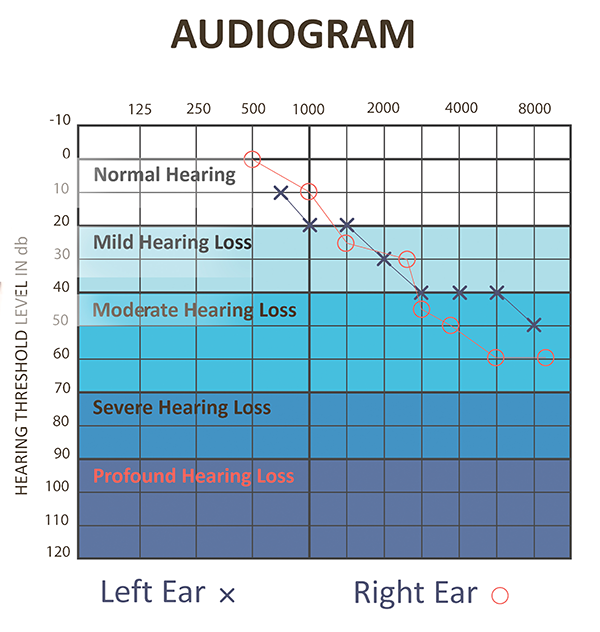Get a Quote
- Great Care - LIFETIME CLINICAL SERVICES
- Value for Money - Quality brands without inflated prices
- Choice of Brands - All major brands supported
There are three types of hearing loss - conductive hearing loss (outer or middle ear), sensorineural (inner ear) hearing loss and mixed (a combination of conductive and sensorineural hearing loss.)
Conductive hearing loss is an outer or middle ear problem and below are some examples of possible causes:
Sensorineural hearing loss, the most common type of hearing loss, occurs when hair cells of the inner ear, and their potential for sending nerve impulses, are damaged. Sensorineural hearing loss is often permanent, but is greatly helped by hearing devices, particularly when hearing loss is the result of loud noise.
The ringing in ears is called tinnitus. Tinnitus sufferers experience persistent hissing or ringing in their ears. It's a major source of discomfort, which affects 15% of Australians, and 30% of Australians aged over 55. Tinnitus (also known as phantom noise due to the absence of external stimuli) is often caused by loud noise, a variety of health problems and some medications (particularly high doses of aspirin). Caffeine, alcohol and smoking are also known to make tinnitus worse.
Researchers at Buffalo University have discovered tinnitus originates somewhere in the brain, not in the ear. There is no magical cure for tinnitus, unless it is related to an easily reversed cause such as earwax build-up. However there are a number of strategies that can be used to minimise the impact that tinnitus has on your life. These strategies include: hearing aids, auditory distractions or stress management.

The most common type of hearing loss is a high frequency hearing loss. When someone is speaking to you, you can make out low-pitch vowels, but high-pitched consonants such as "ss" and "th" are missing. This makes speech sound muffled and hard to understand.
A full diagnostic hearing assessment is easy, painless and non-invasive. The assessment is conducted by a skilled clinician and takes about 30 minutes.
A hearing assessment includes an ear examination and specialised testing to evaluate hearing sensitivity and response to speech. If hearing loss is detected the clinician will guide you through your options.
An audiogram is a chart that shows the results of your hearing test. The graph measures pitch (frequency) vs. intensity (decibels).

You don't need to see a doctor before making an appointment for a hearing test. Just call us on 1800 321 123 to book a hearing check.
Once the hearing assessment is completed, we will send your hearing assessment results and a written report to your doctor or medical specialist.
Should you require hearing devices, your clinician will explain what's involved in the selection and fitting of your new hearing devices.
We work with medical doctors and otolaryngologists (doctors that specialise in diseases of the ear) and refer patients in special cases such as deformity, excessive wax accumulation, sudden onset of hearing loss, acute or chronic dizziness and pain.
Clinicians can charge upwards of several hundred dollars for a full diagnostic hearing assessment. We provide full diagnostic assessments FREE of charge to our private clients.
A clinician is a well-trained, highly qualified healthcare professional, trained in the diagnosis and management of hearing disorders.
A hearing assessment should be done in a sound insulated room. Your clinician will ask you questions and examine your ears and then check your ears by playing tones through earplugs or a headset. Your clinician will explain the hearing assessment results to you and chat about possible solutions, like whether or not hearing devices are needed.
All hearing devices fitted through our clinicians are digital. Digital technology has revolutionised the way hearing devices process sound, providing superior listening comfort, speech clarity, and user control. All digital hearing devices are programmable to individual requirements. Generally speaking, digital hearing devices are the most sophisticated amplifying devices currently available.
All hearing devices use batteries. Hearing device owners are able to change batteries in most models and some hearing devices function on rechargeable batteries.
Yes, in most situations you can get your hearing device repaired. In the case of malfunction or breakdown, we will assess your hearing device and repair it either in our facility or by sending it back to the manufacturer. Repair costs typically range from $10 to $400 depending on the damage or fault.
Hearing devices programmed by one of our trained clinicians won't make hearing worse. By wearing hearing devices, your hearing and auditory comprehension is less likely to deteriorate as fast as if you were not wearing hearing devices.
Yes, two hearing devices are better than one. A hearing test determines the extent of hearing loss in each ear. When both ears are impaired, studies have shown that two hearing aids improve speech understanding in the majority of listening environments, particularly in the presence of background noise. It also ensures that both ears stay active to reduce hearing deterioration and enhances the ability to localise a sound source. Generally, the benefits of using two hearing aids outweigh the additional cost.
We offer a 30 day 100% money back guarantee on all hearing aid devices sold. During this 30 day period, a clinician will do their best to ensure you get the most from your new hearing aids. However, if at any time during this period you decide the hearing device is not working as you expected, you can exchange it for an alternative device or return it for a full refund.
Under the Australian Government Hearing Services Program, eligible clients can obtain, free of charge, a pair of quality hearing devices that will provide a satisfactory rehabilitation outcome if they have a clinical need for one. However, the Australian Government Hearing Services Program also allows for 'top-up' arrangements - where eligible clients may choose to be fitted with a hearing aid with added features beyond those necessary to achieve just a satisfactory level. Under the 'top-up' arrangement, eligible clients pay the difference in cost to the service provider.
The first step in getting hearing devices is being examined by an audiologist, who will identify the extent and type of your hearing problem. You'll need to make an appointment.
Should hearing aids be needed, a clinician will help you select the best device
The clinician may take an impression of your ear to capture an exact duplicate of its contours for the best fit, and will order the selected hearing aids. Delivery normally takes one to two weeks.
A clinician fits your hearing devices and teaches you how to use them.
Getting the best from your hearing devices takes time and practice as your brain acclimatises to hearing more. A clinician monitors your progress and fine-tunes the hearing devices for optimum performance.
Once it's up and running, your new hearing devices should last at least five years.
A clinician will determine the requirement for a hearing aid and will help you select a device that best compensates for your specific hearing loss. Everyone's hearing is unique, and a hearing device that is appropriate for one person's hearing loss may be inappropriate for another person.

While your hearing loss may seem insignificant now - something you can deal with by simply turning the TV louder or asking friends to repeat themselves - it impacts more than you think.
To make matters worse, studies have shown that the effects of hearing loss are cumulative. Just as muscles grow weak from lack of use, the brain loses its ability to process sounds and recognize speech without regular auditory stimulation. ( Auditory Deprivation ) By the time you finally acknowledge your hearing loss is real, you may have already lost the full appreciation of sounds and music you once enjoyed.
Everyone has different reasons for why they put off seeking help for hearing loss, from price issues and vanity concerns to preconceived and often outdated ideas of how hearing aids perform.
The good news is that today's hearing aids - like all high-tech devices - have come a long way in terms of looks and performance. And independent research shows that hearing aid usage has a positive effect on: